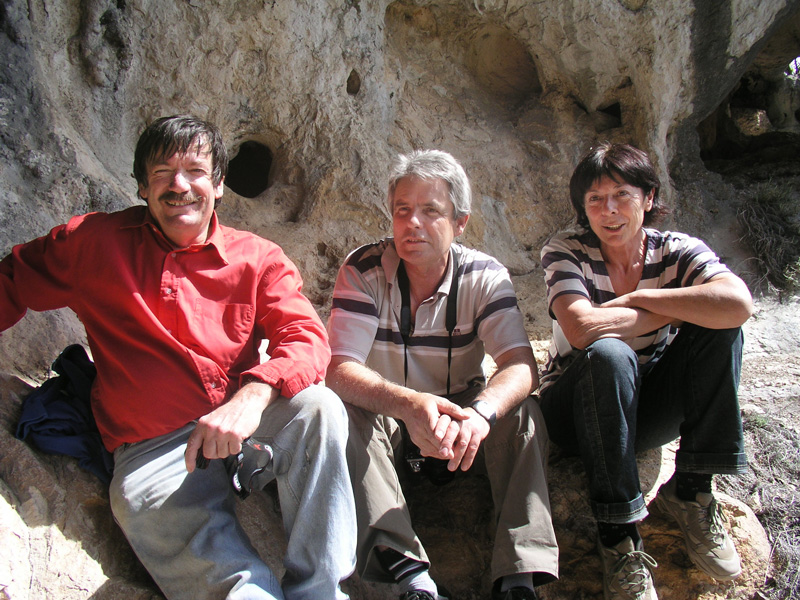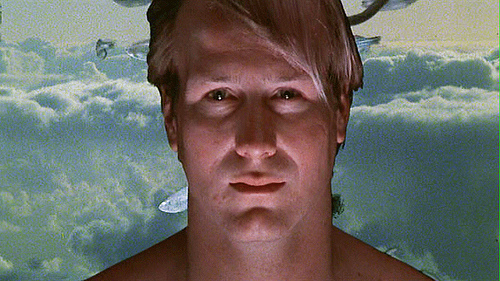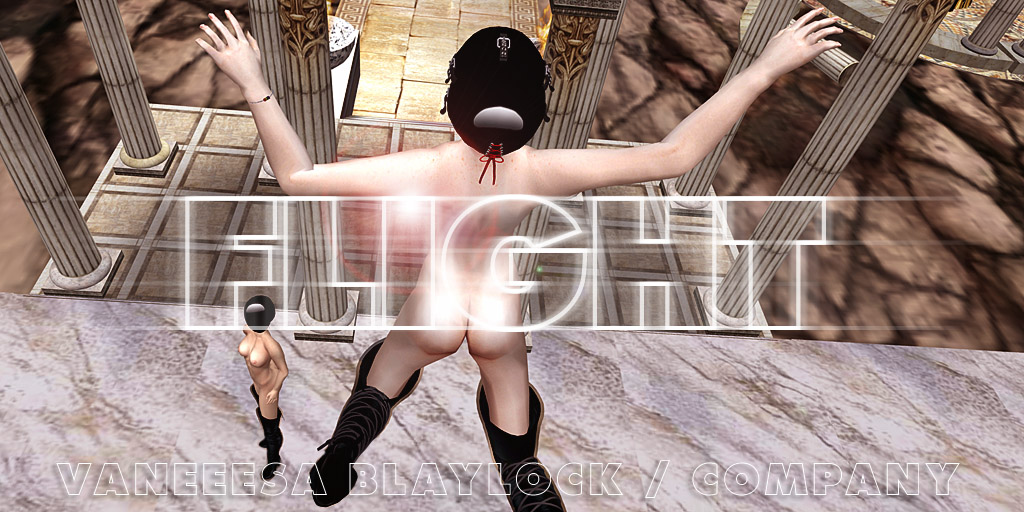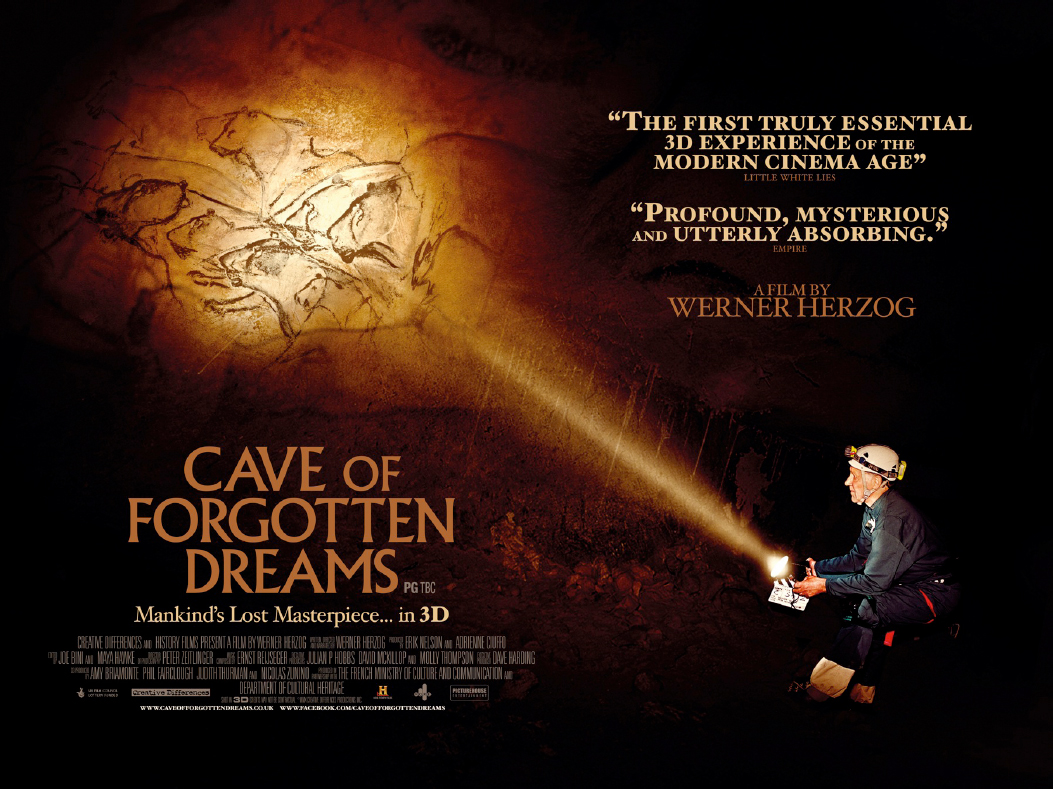In his new film, Cave of Forgotten Dreams, Werner Herzog takes us on a sublime journey into Chauvet Cave in Southern France, putative home of the oldest Western art. I’ve read that Herzog is not a fan of 3D, but that he chose to use it this one time, to give us the experience of the cave walls and how the artworks of Chauvet develop across their sinuous forms.
Although I live in a 3D virtual world, I too am not a fan of 3D. I guess I need words for these 2 kinds of 3D. There probably are words, but IDK what they are, so I’ll make some up… I think I’d like to call a 3D movie “Projection 3D” and I’ll call a virtual world “Spatial 3D” My point is that these two forms are in some senses opposite. With a 3D film your visual experience has depth, but you can see only the viewpoint that the camera operator has provided for you. In a virtual world, even though your display could be 3D, they mostly aren’t, they’re mostly 2D displays, but your camera can be spatially navigated through the world. The projection 3D is ok, but has disadvantages. By contrast, the spatial 3D is extremely immersive, it makes you “physically present” in a “real space” that you can navigate and explore.
Anyway, I’m not a big “Projection 3D” fan, but I think Herzog made a good call here. Exactly as he’d hoped, we get a lot from this experience. I’ve seen all those images as 2D images before, but to see them projected in 3D and with a 4th, temporal dimension of a moving camera, I had a dramatic experience. In 2D I think Lascaux is a bit more photogenic than Chauvet, but in Herzog’s 3D/4D film, Chauvet is truly sublime. Herzog does a nice job of blending the hard science and the ephemeral/eternal art of these caves.
Spectacular as these 3D/4D Chauvet film images are, at 90 minutes the film may already be too long. That’s an individual preference for sure, but I felt it had a bit of a meandering, lingering quality. “Meandering” and “lingering” could be positive attributes, yes the flute is interesting, yes the natural bridge is interesting, yes the albino crocodiles are interesting (I loved my own albino fish experience in the Yucatan) Individually each does resonate with the larger meal Herzog presents from the many bubbling pots in his narrative kitchen, but together they may be too many aromas when I really want a more concentrated time with the images I have seen in 2D for years, but, realistically, will never see with my naked eyes.
It’s funny that these cave paintings are so widely accepted as the oldest Western art, when I looked into it a few years ago, the entirity of the 32,000 YA dating was from a single French carbon dating lab! A lab, I think maybe in Texas, was supposed to be doing verifying tests. I contacted a scientist at the lab who said that the samples hadn’t arrived yet. They were apparently “on their way” for TWO YEARS! How such a foundational pillar of Western art history can be founded on dating from a single lab is bizarre to me.
The fact that (last time I checked, and it’s been a while) this fundamental, foundational verification has never taken place makes one wonder if there are secret doubts about the reliability of the dating. The entirity of the art world seems to accept this date as gospel, and I don’t mean to be an archaeological conspiracy theorist, but the lack of verification is just so strange!? As Paddy Chayefsky’s character Eddie Jessup says in Altered States,
I’ve been getting this patronizing shit from Arthur and Mason for three months now, and I’m sick of it… For God’s sake, all I’m saying is I want to get back to that tank and repeat the experiment. The most elementary laboratory behavior! Repeat the experiment! Confirm it!
My two favorite books on the caves of Southern France are David Lewis-Williams’ The Mind in the Cave and Gregory Curtis’ The Cave Painters. I like both books a lot, Curtis journey through many area caves and Lewis-Williams through the mind of humankind. Ironically, when I met with Curtis he poo-poo’d Lewis-Williams book as “almost certainly not the case.” Still, for me, Lewis-Williams book is a visionary masterpiece into humankind of so long ago. Obviously I don’t really know what happened at Lascaux, Chauvet, or elsewhere. What I do know is that Lewis-Wiliams is consistent with everything else I know and believe.

From The Mind in the Cave, by David Lewis-Williams:
Time: 1994
Place: Chauvet Cave, Ardèche, FranceThree friends are in search of Upper Paleolithic art. On 18 December, Jean-Marie Chauvet, Eliette Brunel Descahmps and Christian Hillaire detect a draft coming from behind a pile of rubble in an unexplored, and not very promising, cave. Having removed enough of the stones, Eliette squeezes through a very narrow tunnel and, after about ten meters comes out on a ledge overlooking a large, echoing chamber; the floor is at least ten meters below her. Together they return to their car to fetch a ladder.
Back in the cave, they unroll the ladder, descend to the floor and begin to explore what they soon realize is a major discovery. As they edge forward, their lamps catch images of animals, handprints and series of dots; depictions of a mammoth and a rhinoceros especially impress them. Taking car to step in the footprints of the leader so as not to damage possible evidence on the floor, they move deeper and deeper into the richly embellished chambers.
In a large chamber they find a panel of horses’ heads, exquisitely painted. Then, ahead of them, they spot a low square rock: resting on it is the skull of a cave bear, it’s canine teeth hooked over the edge. In another, still deeper, chamber they find a series of startling lion heads.
Later, they recall the experience:
“Alone in the vastness, lit by the feeble beam of our lamps, we were seized by a strange feeling. Everything was so beautiful, so fresh, almost too much so. Time was abolished, as if tens of thousands of years that separated us from the producers of these paintings no longer existed. It seemed as if they had just created these masterpieces. Suddenly we felt like intruders. Deeply impressed, we were weighed down by the feeling that we were not alone; the artists’ souls and spirits surrounded us. We thought we could feel their presence; we were disturbing them.”

I incorporated some of Lewis-Williams ideas in my writing on VB07 – I Advance Masked
http://vaneeesa.com/2010/12/13/the-broken-man/
When I saw Cave of Forgotten Dreams I thought I might write a review of it… and now that I’ve typed, it seems that rather than a review, Herzog’s film has been an occasion, a touchstone, for me to muse a little on the faint echos of the big bang of human consciousness.
Here’s a project: stick your index & middle fingers on your carotid artery, look at a second hand, and count your heartbeats for 10 seconds. Then multiply by 6 to get beats / minute. So if you count 11 heart beats in 10 seconds, then your heartrate ATM is 66 BPM.
Then multiply a few more times… like:
66 x 60 x 24 x 365 x 32,000 = 1,110,067,200,000
If you’ve ever wondered about those of your kind, who lived a trillion heartbeats before you, you should go see Cave of Forgotten Dreams.
–VB





The most interesting theory concerning the paintings in the Chauvet and Cosquer caves I´ve ever read is the chapter “Cave Art, Autism, and the Evolution of the Human Mind” in the book “The Mind Made Flesh” from 2002 by Nicholas Humphrey.
He concludes: “Cave art, so far from being the sign of a new order of mentality, may perhaps better be thought the swan-song of the old.”